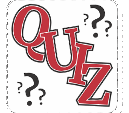 Post Numéro: 15
Post Numéro: 15  de Didier
de Didier  10 Sep 2022, 10:58
10 Sep 2022, 10:58
bonjour,
Si on regarde la bio d'un certain nombres de WASP on se rend compte que cela pouvait varier beaucoup
Suivant les appareils sur lesquels elles étaient certifiées au fils des circonstances et des affectations elles pouvaient être très spécialisé (un ou 2 type d'appareil) ou très polyvalentes (des dizaines d'avions de tout type de l'avion d'entrainement au B-17 ou B-29 en passant par les chasseurs)
Quelques exemples parmis beaucoup d'autres:
Betty Tackaberry Blake
"During her service, Betty flew all types of fighters, bombers, and other aircraft from factories to the East Coast for trans-Atlantic delivery, 36 types of aircraft in all.[ Betty proclaimed her favorite of all these aircraft was the North American P-51 Mustang"
Ann Baumgartner
After completing the training, Baumgartner was assigned to Camp Davis in North Carolina as a tow target pilot. Camp Davis was an artillery training base and the WASPs flew as visual and radar tracking targets. Baumgartner flew the Douglas A-24, Curtiss A-25, Lockheed B-34, Cessna UC-78 and Stinson L-5 while at Camp Davis.
In March 1944 she was transferred to Wright Field as an assistant operations officer in the fighter test section.
Originally her duties were primarily clerical but over time she was permitted to fly as a test pilot. Additionally, Baumgartner was assigned to transport staff officers to other Army bases, and delivered planes as required. When Baumgartner worked in the bomber flight test division for a short time, she gained pilot and copilot experience in the B-17, B-24, B-29, the British de Havilland Mosquito, and the German Junkers Ju 88. After her reassignment back to the fighter test division, she flew America's first jet aircraft, the Bell YP-59A on October 14, 1944, becoming the first American woman to fly a jet. Her assignment as a fighter flight test pilot at Wright Field ended in December 1944 when the WASP program was disbanded."
Elizabeth Maxine Chambers
"As a pilot she flew North American AT-6 advanced trainers, PT-17 biplane primary trainers, Beechcraft AT-10 twin-engineer trainers, and the BT-25."
Gwendolyne Cowart
"She ferried P-38s and P-47s across the United States"
Violet Cowden
"owden became one of only 114 WASP to fly the fighter planes during the war, including the P-47 Thunderbolt, P-39 AiraCobra, P-63 Kingcobra, and her favorite and the "love of her life," the P-51 Mustang."
Iris Cummings
"Upon completing a contract as flight instructor for the Navy Cadet Training Program,Cummings joined the Women's Auxiliary Ferrying Squadron in December 1942, which later, in August 1943, became part of the Women Airforce Service Pilots (WASP) She served in World War II until the organization's deactivation on December 20, 1944.[During this time, she was a civilian member of the 6th Ferrying Group, Air Transport Command, Ferrying Division and flew military aircraft including the P-38, P-51, and P-61 (Black Widow)."
Mildred Inks Davidson Dalrymple
"She flew an amazing number and variety of military aircraft, including B-17s, C-45s, BT-13s, AT-6s and the venerable B-24 "Liberator" bomber"
Elizabeth L. Gardner
"Gardner flew Martin B-26 Marauder medium bombers, including the AT-23 trainer version of the bomber. One of her stations was in Dodge City, Kansas.She was trained as a test pilot and flight instructor,and she also flew aircraft that towed aerial targets."
Betty Gillies
"In early March 1943, Gillies became the first woman to fly the Republic P-47 Thunderbolt when she was checked out on the aircraft at Wilmington. The "check out" consisted of an explanation of aircraft systems, flight characteristics and emergency procedures.
One of the outstanding ferry missions accomplished by the original Squadron at Wilmington came in April 1943, when four Fairchild PT-26s were delivered from Hagerstown, Maryland, to DeWinton, Alberta, Canada, a distance of more than 2,500 miles. Gillies was flight leader, and the other three pilots were Nancy Batson, Helen McGilvery and Kathryn Bernheim. The type of aircraft flown had a cruising speed of only around 100 mph.
The group left Hagerstown on April 18, spent the night at Joliet, Illinois (697 miles away), spent the next night at North Platte, Neb., after a run of 585 miles, then made a long hop of 846 miles to Great Falls, Montana. On April 21 they flew the remaining 275 miles to DeWinton, Alberta. All four pilots were back at the 2nd Group by Friday evening, April 23, and were commended by Colonel Baker for their efficient and prompt delivery, which included not only the flying of the aircraft but also the paperwork involved in such deliveries, such as flight logs, gasoline reports and RON (remain over night) messages.
On August 15, 1943, Love and Gillies qualified as first pilots (aircraft commanders) on Boeing B-17s and made three deliveries together during the balance of the month. On September 2, 1943 Gillies and Nancy Love departed Cincinnati on a ferry mission to deliver a B-17F to England; however, the mission was canceled before the aircraft left Goose Bay, Labrador."
Gloria Heath
"Heath joined the Women Airforce Service Pilots, the first group of American women to fly military aircraft, upon graduating from Smith. As a WASP, Heath flew B-26 bombers used for target practice at Grissom Air Reserve Base in Indiana."
Evelyn Greenblatt Howren
"With an excellent record and over 300 flying hours she was released from her air traffic control duty in November 1942 to join the first class of Women Airforce Service Pilots (WASPs). She was one of the first class of twenty-three who graduated on April 24, 1943 at Ellington Field in Houston. During the war she was assigned to Love Field in Dallas and Peterson Army Air Base in Colorado Springs.
Greenblatt spent 16 months ferrying various planes from their manufacturers to military training centers and elsewhere.She flew 30 different military aircraft including the B-17 and B-24 bombers and six types of fighter aircraft. By the end of the war she had logged 3,000 hours of flight time"
Dorothy Swain Lewis
" After receiving her commercial pilot and ground instructor ratings, she went on to train four classes of naval aviators. She then joined the Women Airforce Service Pilots (WASP) program, where she both taught trainee pilots and herself flew fighters and bombers on maintenance and training missions. Aircraft she flew included the Bell P-63 Kingcobra, Martin B-26 Marauder, and Curtiss P-40 Warhawk"
Madge Moore
"She graduated from her WASP training on May 23, 1944. Moore was stationed at Perrin Field.As a WASP, she ferried planes, some of which no longer had functioning instruments, forcing her to use dead reckoning.Many of the planes she flew were from Kelly Field, which was closing and she most often ferried BT-13s and AT-6s. She also tested planes after they were repaired."
Suzanne Parish
"when she was 21, Parish joined the Women Airforce Service Pilots (WASPs). She was in the 44-W-6 class and was stationed at Bryan Army Air Base near Bryan, Texas, where she flew P-40, AT-6, and BT-13 planes."
Dora Dougherty Strother
"In 1940, Strother earned her pilot certificate via the Civilian Pilot Training Program, sponsored by the Civil Aeronautics Authority. She then became the sixth woman in the United States to earn an airline transport pilot license. The demand for male pilots in World War II opened doors for pilot training programs for women. Initially, two separate training programs were run: the Women's Auxiliary Ferrying Squadron (WAFS) was headed by Nancy Harkness Love and the 319th Women's Flying Training Detachment (WFTD) organized by Jacqueline Cochran out of Houston. The programs were merged in 1943 as Women’s Airforce Service Pilots (WASP) and helmed by Cochran. Dora Jean Dougherty Strother volunteered and was selected in the third class of WASP program
trother's piloting jobs in the WASP program included flight training, target towing for antiaircraft gunnery, ferrying, and radio control piloting. WASPS like Strother flew almost every type of plane used by Army Air Forces such as liaison, training, and cargo aircraft. They also flew and trained other pilots to fly fighters, dive bombers, attack bombers, and very heavy bombers like the B-29.In 1944, she and fellow WASP Dorothea Johnson Moorman were selected by Lt. Col. Paul W. Tibbets to learn to fly the Boeing B-29 Superfortress heavy bomber. The plane was considered dangerous and cumbersome, and Tibbets believed the two women could learn to fly the four-engine plane to showcase its reliability. After four days of flight training, Tibbets certified Strother and Moorman for the B-29, some of the few women to fly the type for decades.
They flew the B-29 from Birmingham, Alabama, to Clovis, New Mexico. There they took male crews on flights and further trained them, demonstrating the feasibility of flying the B-29 for a few days, and the crews' attitude towards the B-29 improved."

 Se Connecter
Se Connecter















 dans:
dans: